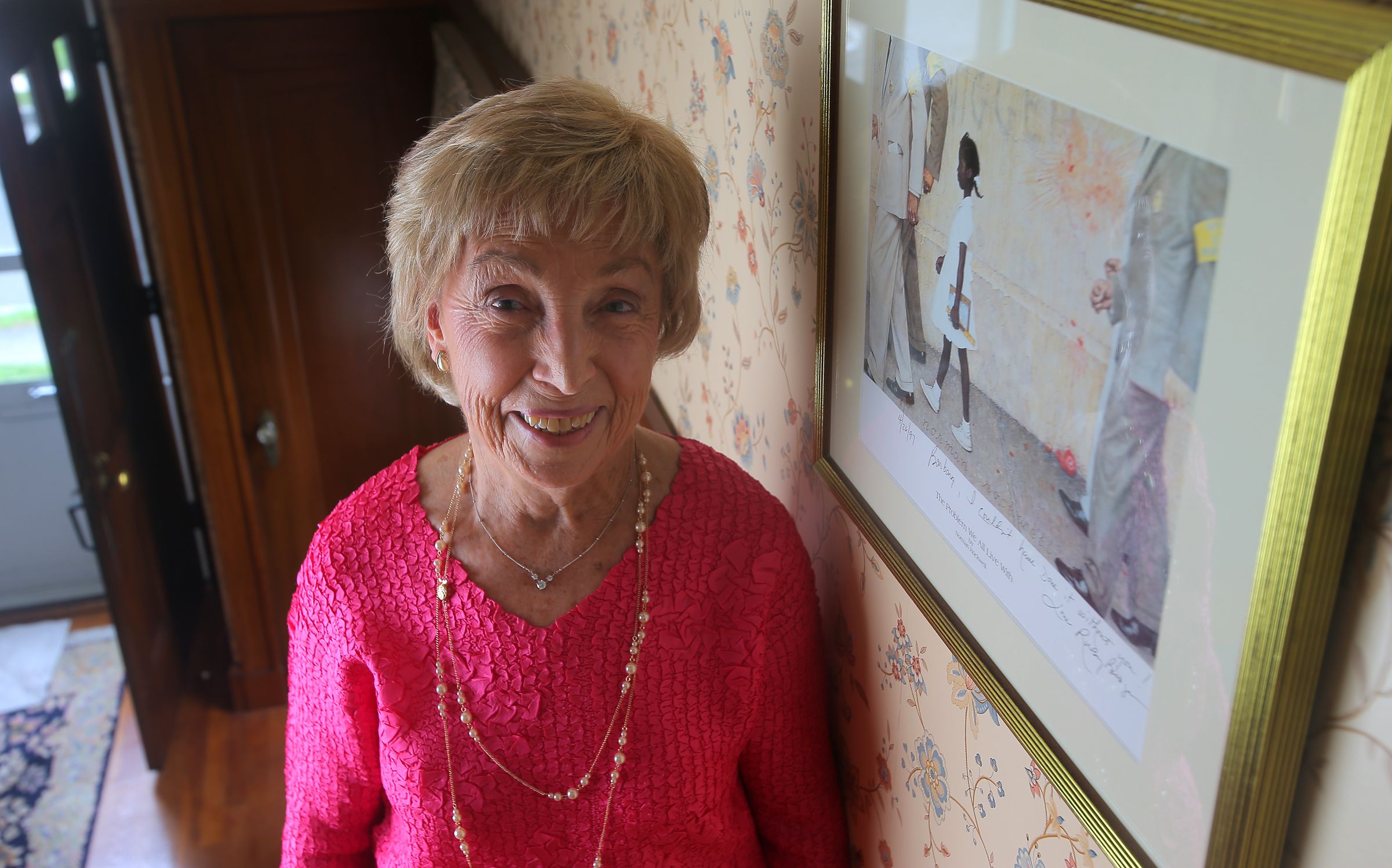Is Ruby Bridges alive today? This question has intrigued many who recognize her pivotal role in the Civil Rights Movement. Ruby Bridges, a monumental figure in American history, became a symbol of courage and perseverance at the tender age of six. In 1960, she made history by becoming the first African American child to integrate an all-white elementary school in the South, facing significant challenges and hostility. Her story continues to inspire countless individuals, but what has become of her in recent years? Let’s explore the life of Ruby Bridges, her lasting legacy, and her current status.
Ruby Bridges' journey is more than just a historical account—it is a powerful reminder of the strength of the human spirit. Born in 1954, she grew up during an era of deep racial segregation in the United States. Her enrollment at William Frantz Elementary School in New Orleans marked a turning point in the struggle for educational equality. Despite the threats and hostility she endured, Ruby’s unwavering determination paved the way for generations to come. Her story is a shining example of how one individual can spark monumental change.
In this article, we will delve into Ruby Bridges' life, her contributions to civil rights, and answer the pressing question: Is Ruby Bridges still alive? We will also examine her ongoing influence on education and society, supported by credible sources and data. Whether you are a history enthusiast, a student, or simply curious, this article will provide a thorough understanding of Ruby Bridges' life and her enduring impact.
Read also:Pepe Aguilar A Journey Through Music And Culture
Table of Contents
- Biography of Ruby Bridges
- Early Life and Background
- Her Role in the Civil Rights Movement
- Is Ruby Bridges Still Alive?
- Ruby Bridges’ Personal Life
- The Ruby Bridges Foundation
- Her Lasting Legacy
- Inspiring Future Generations
- Key Statistics and Facts
- Conclusion: Celebrating Ruby Bridges
Biography of Ruby Bridges
| Full Name | Ruby Nell Bridges |
|---|---|
| Date of Birth | September 8, 1954 |
| Place of Birth | Tylertown, Mississippi, USA |
| Education | William Frantz Elementary School, later graduated from high school |
| Occupation | Civil Rights Activist, Author, Philanthropist |
| Notable Achievements | First African American child to desegregate an all-white school in the South |
Early Life and Background
Ruby Bridges was born on September 8, 1954, in Tylertown, Mississippi, during a period when racial segregation was deeply ingrained in American society. Her family later relocated to New Orleans, Louisiana, in search of better opportunities. Growing up in a working-class environment, Ruby’s parents instilled in her the values of hard work, resilience, and faith, which would later guide her through life's challenges.
In 1960, Ruby’s life took a dramatic turn when she was chosen to attend William Frantz Elementary School as part of a federal desegregation initiative. Out of six African American children selected for the program, Ruby was the sole one assigned to William Frantz. Her enrollment incited outrage and resistance from white parents, leading to protests and threats of violence. Despite these obstacles, Ruby's bravery and determination shone brightly, marking the beginning of a new chapter in American history.
Her Role in the Civil Rights Movement
Ruby Bridges' involvement in the Civil Rights Movement is one of the most inspiring tales of courage and perseverance. On November 14, 1960, accompanied by federal marshals, Ruby walked through a hostile crowd to enter William Frantz Elementary School. She was the only student in her class for the entire year, as white parents withdrew their children in protest. Despite the isolation and hostility, Ruby remained steadfast, demonstrating remarkable strength and resilience.
Ruby’s bravery was immortalized in Norman Rockwell’s famous painting, The Problem We All Live With, which depicts her being escorted by marshals to school. Her story became a powerful symbol of the fight for racial equality in education and inspired countless others to join the movement. Ruby’s actions not only changed her life but also contributed significantly to the broader struggle for civil rights in the United States.
Impact on Education
- Her enrollment at William Frantz Elementary School marked a pivotal moment in the desegregation of Southern schools.
- Ruby’s courage opened doors for future generations of African American students, providing them with access to better educational opportunities.
- Her story highlighted the systemic racism embedded in the American education system, sparking a national conversation about equality and justice.
Is Ruby Bridges Still Alive?
Yes, Ruby Bridges is indeed alive and well as of 2023. She continues to be a passionate advocate for civil rights and education reform, using her voice to inspire change. Ruby's ongoing presence serves as a powerful reminder of the progress achieved and the work that still lies ahead in the pursuit of true equality.
Currently residing in New Orleans, Ruby remains deeply engaged in community initiatives. She frequently speaks at schools, universities, and events, sharing her story and encouraging others to stand up against injustice. Her unwavering resilience and optimism continue to resonate with individuals of all ages, inspiring them to create a more just and equitable society.
Read also:Stream Your Favorite Bollywood Movies On Netflix In Hindi
Ruby Bridges’ Personal Life
Ruby Bridges married Malcolm Hall in 1984, and together they have four sons. Despite the challenges she faced during her formative years, Ruby has built a loving and supportive family. Her personal life reflects her commitment to fostering unity and understanding, demonstrating that even in the face of adversity, love and compassion can prevail.
The Ruby Bridges Foundation
In 1999, Ruby founded the Ruby Bridges Foundation, a nonprofit organization dedicated to promoting tolerance, respect, and equality. The foundation focuses on educational initiatives and community programs aimed at bridging racial and cultural divides. Through its efforts, the foundation seeks to empower individuals and communities to work together toward a more inclusive and equitable society.
Key Initiatives
- Workshops and seminars for students and educators to foster understanding and inclusivity.
- Scholarships for underprivileged youth to ensure access to quality education.
- Partnerships with schools to promote diversity and inclusion, creating environments where all students can thrive.
Her Lasting Legacy
Ruby Bridges' legacy transcends her historic enrollment at William Frantz Elementary School. She has become a global symbol of courage and determination, inspiring countless individuals to fight for justice and equality. Her story has been immortalized in books, documentaries, and films, ensuring that future generations learn about her contributions and the impact she has made on society.
Ruby’s influence on education and civil rights continues to shape policies and conversations about racial equity. Her efforts have laid the groundwork for ongoing efforts to dismantle systemic racism and promote equality in all aspects of life.
Inspiring Future Generations
Ruby Bridges' story serves as a powerful reminder of the importance of standing up for what is right, even in the face of overwhelming adversity. Her courage has inspired countless young people to become activists and advocates for change. Through her foundation and public appearances, Ruby continues to empower others to create a more just and equitable world.
Her message of hope and resilience resonates with individuals from all walks of life, encouraging them to take action and make a difference in their communities. Ruby’s legacy is not just about the past—it is a call to action for the present and the future.
Quotes by Ruby Bridges
- “Racism is a grown-up disease, and we must stop using our children to spread it.”
- “Don’t follow the path. Go where there is no path and begin the trail.”
Key Statistics and Facts
Here are some important statistics and facts about Ruby Bridges and her impact:
- In 1960, only 2% of African American children attended integrated schools in the South, highlighting the significant barriers Ruby faced.
- Ruby’s enrollment at William Frantz Elementary School marked the beginning of widespread desegregation efforts, paving the way for future generations.
- According to a 2020 study, schools in the U.S. remain largely segregated, underscoring the ongoing need for reform and continued advocacy.
Conclusion: Celebrating Ruby Bridges
Ruby Bridges' story is a testament to the power of courage and resilience in the face of adversity. From her groundbreaking enrollment at William Frantz Elementary School to her ongoing advocacy work, Ruby has left an indelible mark on history. Her legacy continues to inspire and educate people around the world, reminding us of the importance of equality and justice.
So, is Ruby Bridges still alive? Yes, she most certainly is. She remains a beacon of hope and a symbol of progress in the fight for equality. We encourage you to share your thoughts in the comments below, spread the word about Ruby’s inspiring journey, or explore more articles on civil rights and education. Together, we can continue to build a more inclusive and equitable future for all.

